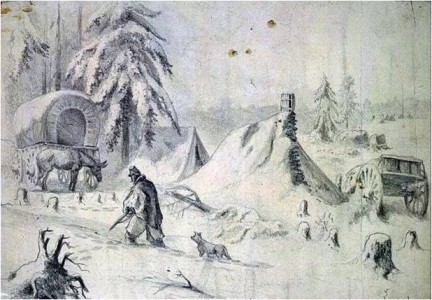Defeat at Fredericksburg Despair in Stafford
Certain knowledge that Burnside’s Army of the Potomac (AOP) had been brutally defeated by Lee’s Army of Northern Virginia brought the Federals to their lowest point in morale and effectiveness during the war in the East. Christmas Day, 1862, dawned and Stafford’s winter loomed. Major Rufus Dawes, 6th Wisconsin Infantry, made an important connection: “This winter, indeed, is the Valley Forge of the war.” Desertions accelerated to over 25,000 and over 200 a day. The medical system became a sieve and those remaining despaired.
Illness stalked the army and provided another means for evacuation and desertion. The Northern people, losing heart in the seemingly endless conflict, encouraged soldiers to desert. The anti-war “Copperhead” (Peace Democrat) faction feasted politically on the failure to win. Indiscipline, fueled by poor food, heavy losses and a poisonous atmosphere in command and leadership, ran rampant. The army’s War Democrats (about 53 percent of the AOP) blamed Lincoln and his administration – especially for the Emancipation Proclamation set to go into effect on January 1, 1863 – for failure. Burnside, now planning an offensive operation, allowed his officers to party while their soldiers suffered in their over 30,000 rudely-fashioned flimsy shelters. No American field force, including Washington’s Valley Forge army, would ever face greater obstacles to battlefield victory and military success…

